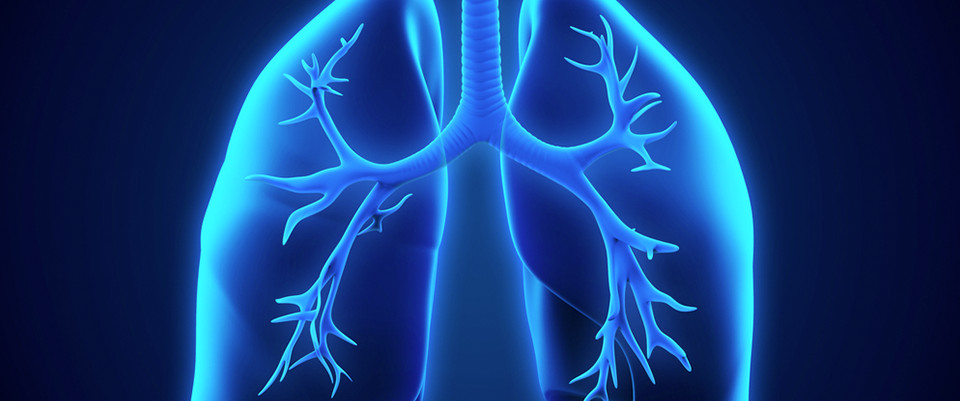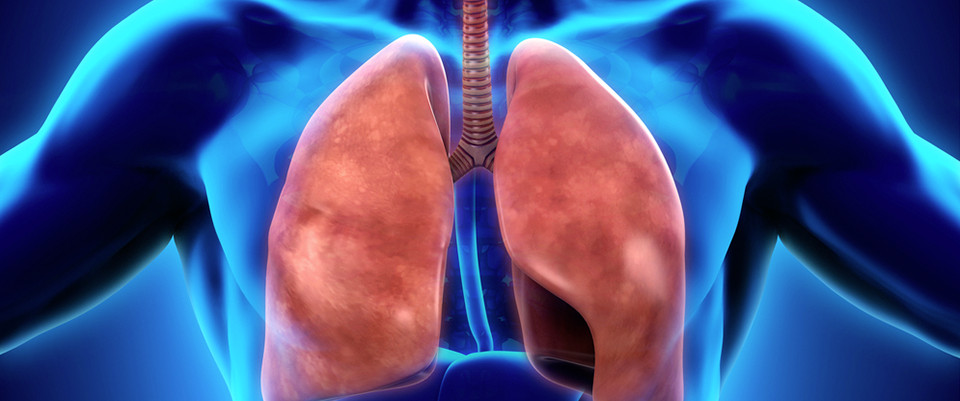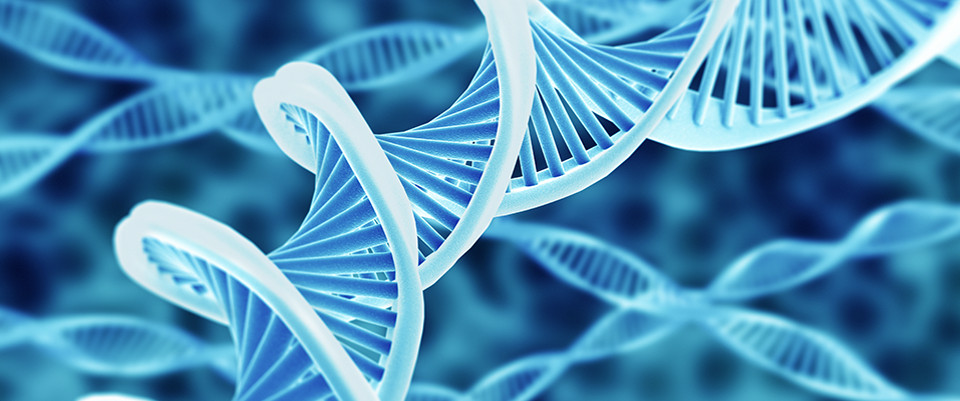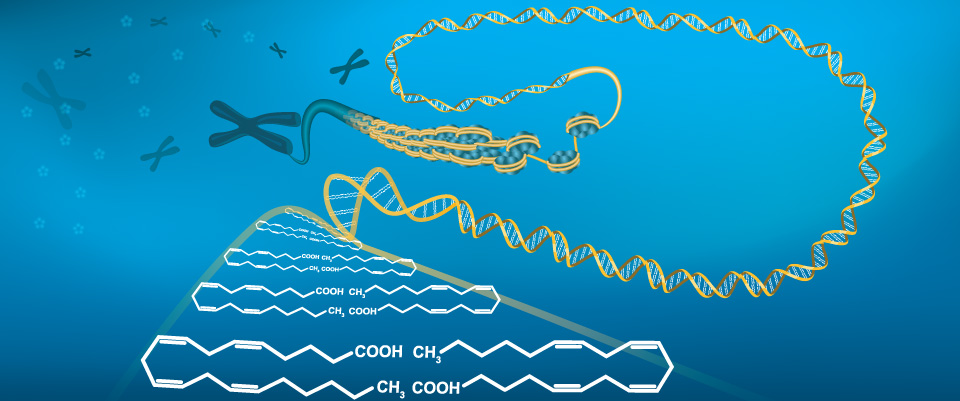PubMed
Maresin 1 biosynthesis during platelet-neutrophil interactions is organ-protective.
Related Articles
Maresin 1 biosynthesis during platelet-neutrophil interactions is organ-protective.
Proc Natl Acad Sci U S A. 2014 Nov 18;111(46):16526-31
Authors: Abdulnour RE, Dalli J, Colby JK, Krishnamoorthy N, Timmons JY, Tan SH, Colas RA, Petasis NA, Serhan CN, Levy BD
Abstract
Unregulated acute inflammation can lead to collateral tissue injury in vital organs, such as the lung during the acute respiratory distress syndrome. In response to tissue injury, circulating platelet-neutrophil aggregates form to augment neutrophil tissue entry. These early cellular events in acute inflammation are pivotal to timely resolution by mechanisms that remain to be elucidated. Here, we identified a previously undescribed biosynthetic route during human platelet-neutrophil interactions for the proresolving mediator maresin 1 (MaR1; 7R,14S-dihydroxy-docosa-4Z,8E,10E,12Z,16Z,19Z-hexaenoic acid). Docosahexaenoic acid was converted by platelet 12-lipoxygenase to 13S,14S-epoxy-maresin, which was further transformed by neutrophils to MaR1. In a murine model of acute respiratory distress syndrome, lipid mediator metabololipidomics uncovered MaR1 generation in vivo in a temporally regulated manner. Early MaR1 production was dependent on platelet-neutrophil interactions, and intravascular MaR1 was organ-protective, leading to decreased lung neutrophils, edema, tissue hypoxia, and prophlogistic mediators. Together, these findings identify a transcellular route for intravascular maresin 1 biosynthesis via platelet-neutrophil interactions that regulates the extent of lung inflammation.
PMID: 25369934 [PubMed - indexed for MEDLINE]
Global metabolomic analysis of human saliva and plasma from healthy and diabetic subjects, with and without periodontal disease.
Related Articles
Global metabolomic analysis of human saliva and plasma from healthy and diabetic subjects, with and without periodontal disease.
PLoS One. 2014;9(8):e105181
Authors: Barnes VM, Kennedy AD, Panagakos F, Devizio W, Trivedi HM, Jönsson T, Guo L, Cervi S, Scannapieco FA
Abstract
Recent studies suggest that periodontal disease and type 2 diabetes mellitus are bi-directionally associated. Identification of a molecular signature for periodontitis using unbiased metabolic profiling could allow identification of biomarkers to assist in the diagnosis and monitoring of both diabetes and periodontal disease. This cross-sectional study identified plasma and salivary metabolic products associated with periodontitis and/or diabetes in order to discover biomarkers that may differentiate or demonstrate an interaction of these diseases. Saliva and plasma samples were analyzed from 161 diabetic and non-diabetic human subjects with a healthy periodontium, gingivitis and periodontitis. Metabolite profiling was performed using Metabolon's platform technology. A total of 772 metabolites were found in plasma and 475 in saliva. Diabetics had significantly higher levels of glucose and α-hydroxybutyrate, the established markers of diabetes, for all periodontal groups of subjects. Comparison of healthy, gingivitis and periodontitis saliva samples within the non-diabetic group confirmed findings from previous studies that included increased levels of markers of cellular energetic stress, increased purine degradation and glutathione metabolism through increased levels of oxidized glutathione and cysteine-glutathione disulfide, markers of oxidative stress, including increased purine degradation metabolites (e.g. guanosine and inosine), increased amino acid levels suggesting protein degradation, and increased ω-3 (docosapentaenoate) and ω-6 fatty acid (linoleate and arachidonate) signatures. Differences in saliva between diabetic and non-diabetic cohorts showed altered signatures of carbohydrate, lipid and oxidative stress exist in the diabetic samples. Global untargeted metabolic profiling of human saliva in diabetics replicated the metabolite signature of periodontal disease progression in non-diabetic patients and revealed unique metabolic signatures associated with periodontal disease in diabetics. The metabolites identified in this study that discriminated the periodontal groups may be useful for developing diagnostics and therapeutics tailored to the diabetic population.
PMID: 25133529 [PubMed - indexed for MEDLINE]
Phosphoproteomic profiling of human myocardial tissues distinguishes ischemic from non-ischemic end stage heart failure.
Related Articles
Phosphoproteomic profiling of human myocardial tissues distinguishes ischemic from non-ischemic end stage heart failure.
PLoS One. 2014;9(8):e104157
Authors: Schechter MA, Hsieh MK, Njoroge LW, Thompson JW, Soderblom EJ, Feger BJ, Troupes CD, Hershberger KA, Ilkayeva OR, Nagel WL, Landinez GP, Shah KM, Burns VA, Santacruz L, Hirschey MD, Foster MW, Milano CA, Moseley MA, Piacentino V, Bowles DE
Abstract
The molecular differences between ischemic (IF) and non-ischemic (NIF) heart failure are poorly defined. A better understanding of the molecular differences between these two heart failure etiologies may lead to the development of more effective heart failure therapeutics. In this study extensive proteomic and phosphoproteomic profiles of myocardial tissue from patients diagnosed with IF or NIF were assembled and compared. Proteins extracted from left ventricular sections were proteolyzed and phosphopeptides were enriched using titanium dioxide resin. Gel- and label-free nanoscale capillary liquid chromatography coupled to high resolution accuracy mass tandem mass spectrometry allowed for the quantification of 4,436 peptides (corresponding to 450 proteins) and 823 phosphopeptides (corresponding to 400 proteins) from the unenriched and phospho-enriched fractions, respectively. Protein abundance did not distinguish NIF from IF. In contrast, 37 peptides (corresponding to 26 proteins) exhibited a ≥ 2-fold alteration in phosphorylation state (p<0.05) when comparing IF and NIF. The degree of protein phosphorylation at these 37 sites was specifically dependent upon the heart failure etiology examined. Proteins exhibiting phosphorylation alterations were grouped into functional categories: transcriptional activation/RNA processing; cytoskeleton structure/function; molecular chaperones; cell adhesion/signaling; apoptosis; and energetic/metabolism. Phosphoproteomic analysis demonstrated profound post-translational differences in proteins that are involved in multiple cellular processes between different heart failure phenotypes. Understanding the roles these phosphorylation alterations play in the development of NIF and IF has the potential to generate etiology-specific heart failure therapeutics, which could be more effective than current therapeutics in addressing the growing concern of heart failure.
PMID: 25117565 [PubMed - indexed for MEDLINE]
Dimethyl α-ketoglutarate inhibits maladaptive autophagy in pressure overload-induced cardiomyopathy.
Related Articles
Dimethyl α-ketoglutarate inhibits maladaptive autophagy in pressure overload-induced cardiomyopathy.
Autophagy. 2014 May;10(5):930-2
Authors: Mariño G, Pietrocola F, Kong Y, Eisenberg T, Hill JA, Madeo F, Kroemer G
Abstract
It has been a longstanding problem to identify specific and efficient pharmacological modulators of autophagy. Recently, we found that depletion of acetyl-coenzyme A (AcCoA) induced autophagic flux, while manipulations designed to increase cytosolic AcCoA efficiently inhibited autophagy. Thus, the cell permeant ester dimethyl α-ketoglutarate (DMKG) increased the cytosolic concentration of α-ketoglutarate, which was converted into AcCoA through a pathway relying on either of the 2 isocitrate dehydrogenase isoforms (IDH1 or IDH2), as well as on ACLY (ATP citrate lyase). DMKG inhibited autophagy in an IDH1-, IDH2- and ACLY-dependent fashion in vitro, in cultured human cells. Moreover, DMKG efficiently prevented autophagy induced by starvation in vivo, in mice. Autophagy plays a maladaptive role in the dilated cardiomyopathy induced by pressure overload, meaning that genetic inhibition of autophagy by heterozygous knockout of Becn1 suppresses the pathological remodeling of heart muscle responding to hemodynamic stress. Repeated administration of DMKG prevents autophagy in heart muscle responding to thoracic aortic constriction (TAC) and simultaneously abolishes all pathological and functional correlates of dilated cardiomyopathy: hypertrophy of cardiomyocytes, fibrosis, dilation of the left ventricle, and reduced contractile performance. These findings indicate that DMKG may be used for therapeutic autophagy inhibition.
PMID: 24675140 [PubMed - indexed for MEDLINE]
Evidence for the involvement of GD3 ganglioside in autophagosome formation and maturation.
Related Articles
Evidence for the involvement of GD3 ganglioside in autophagosome formation and maturation.
Autophagy. 2014 May;10(5):750-65
Authors: Matarrese P, Garofalo T, Manganelli V, Gambardella L, Marconi M, Grasso M, Tinari A, Misasi R, Malorni W, Sorice M
Abstract
Sphingolipids are structural lipid components of cell membranes, including membrane of organelles, such as mitochondria or endoplasmic reticulum, playing a role in signal transduction as well as in the transport and intermixing of cell membranes. Sphingolipid microdomains, also called lipid rafts, participate in several metabolic and catabolic cell processes, including apoptosis. However, the defined role of lipid rafts in the autophagic flux is still unknown. In the present study we analyzed the role of gangliosides, a class of sphingolipids, in autolysosome morphogenesis in human and murine primary fibroblasts by means of biochemical and analytical cytology methods. Upon induction of autophagy, by using amino acid deprivation as well as tunicamycin, we found that GD3 ganglioside, considered as a paradigmatic raft constituent, actively contributed to the biogenesis and maturation of autophagic vacuoles. In particular, fluorescence resonance energy transfer (FRET) and coimmunoprecipitation analyses revealed that this ganglioside interacts with phosphatidylinositol 3-phosphate and can be detected in immature autophagosomes in association with LC3-II as well as in autolysosomes associated with LAMP1. Hence, it appears as a structural component of autophagic flux. Accordingly, we found that autophagy was significantly impaired by knocking down ST8SIA1/GD3 synthase (ST8 α-N-acetyl-neuraminide α-2,8-sialyltransferase 1) or by altering sphingolipid metabolism with fumonisin B1. Interestingly, exogenous administration of GD3 ganglioside was capable of reactivating the autophagic process inhibited by fumonisin B1. Altogether, these results suggest that gangliosides, via their molecular interaction with autophagy-associated molecules, could be recruited to autophagosome and contribute to morphogenic remodeling, e.g., to changes of membrane curvature and fluidity, finally leading to mature autolysosome formation.
PMID: 24589479 [PubMed - indexed for MEDLINE]
Bariatric surgery improves the metabolic profile of morbidly obese patients with type 1 diabetes.
Related Articles
Bariatric surgery improves the metabolic profile of morbidly obese patients with type 1 diabetes.
Diabetes Care. 2014;37(3):e51-2
Authors: Brethauer SA, Aminian A, Rosenthal RJ, Kirwan JP, Kashyap SR, Schauer PR
PMID: 24558084 [PubMed - indexed for MEDLINE]
Systematic prediction of health-relevant human-microbial co-metabolism through a computational framework.
Related Articles
Systematic prediction of health-relevant human-microbial co-metabolism through a computational framework.
Gut Microbes. 2015 Mar 4;6(2):120-130
Authors: Heinken A, Thiele I
Abstract
The gut microbiota is well known to affect host metabolic phenotypes. The systemic effects of the gut microbiota on host metabolism are generally evaluated via the comparison of germfree and conventional mice, which is impossible to perform for humans. Hence, it remains difficult to determine the impact of the gut microbiota on human metabolic phenotypes. We demonstrate that a constraint-based modeling framework that simulates "germfree" and "ex-germfree" human individuals can partially fill this gap and allow for in silico predictions of systemic human-microbial co-metabolism. To this end, we constructed the first constraint-based host-microbial community model, comprising the most comprehensive model of human metabolism and 11 manually curated, validated metabolic models of commensals, probiotics, pathogens, and opportunistic pathogens. We used this host-microbiota model to predict potential metabolic host-microbe interactions under 4 in silico dietary regimes. Our model predicts that gut microbes secrete numerous health-relevant metabolites into the lumen, thereby modulating the molecular composition of the body fluid metabolome. Our key results include the following: 1. Replacing a commensal community with pathogens caused a loss of important host metabolic functions. 2. The gut microbiota can produce important precursors of host hormone synthesis and thus serves as an endocrine organ. 3. The synthesis of important neurotransmitters is elevated in the presence of the gut microbiota. 4. Gut microbes contribute essential precursors for glutathione, taurine, and leukotrienes. This computational modeling framework provides novel insight into complex metabolic host-microbiota interactions and can serve as a powerful tool with which to generate novel, non-obvious hypotheses regarding host-microbe co-metabolism.
PMID: 25901891 [PubMed - as supplied by publisher]
Effect of Dietary Sodium Restriction on Human Urinary Metabolomic Profiles.
Related Articles
Effect of Dietary Sodium Restriction on Human Urinary Metabolomic Profiles.
Clin J Am Soc Nephrol. 2015 Apr 21;
Authors: Jablonski KL, Klawitter J, Chonchol M, Bassett CJ, Racine ML, Seals DR
Abstract
BACKGROUND AND OBJECTIVES: Metabolomics is a relatively new field of "-omics" research, focusing on high-throughput identification of small molecular weight metabolites. Diet has both acute and chronic effects on metabolic profiles; however, alterations in response to dietary sodium restriction (DSR) are completely unknown. The goal of this study was to explore changes in urine metabolites in response to DSR, as well as their association with previously reported improvements in vascular function with DSR.
DESIGN, SETTING, PARTICIPANTS, & MEASUREMENTS: Using stored urine samples from a 10-week randomized placebo-controlled crossover study of DSR in 17 middle-aged/older adults (six men and 11 women; mean age 62±8 years) who had moderately elevated systolic BP (130-159 mmHg) and were otherwise healthy, a liquid chromatography/mass spectrometry-based analysis of 289 metabolites was performed. This study identified metabolites that were significantly altered between the typical (153±29 mmol/d) and low (70±29 mmol/d) sodium conditions, as well as their baseline (typical sodium) association with responsiveness to previously reported improvements in vascular endothelial function (brachial artery flow-mediated dilation) and large elastic artery stiffness (aortic pulse wave velocity).
RESULTS: Of the 289 metabolites surveyed, 10 were significantly altered (nine were upregulated and one was downregulated) during the low sodium condition, and eight of these exceeded our prespecified clinically significant threshold of a >40% change. These metabolites were involved in biologic pathways broadly related to cardiovascular risk, nitric oxide production, oxidative stress, osmotic regulation, and metabolism. One metabolite, serine, was independently (positively) associated with previously reported improvements in the primary vascular outcome of brachial artery flow-mediated dilation.
CONCLUSIONS: This proof-of-concept study provides the first evidence that DSR is a stimulus that induces significant changes in urinary metabolomic profiles. Moreover, serine was independently associated with corresponding changes in vascular endothelial function after DSR. Larger follow-up studies will be required to confirm and further elucidate the metabolic pathways that are altered in response to DSR.
PMID: 25901092 [PubMed - as supplied by publisher]
Integrated metabolomics and genomics: systems approaches to biomarkers and mechanisms of cardiovascular disease.
Related Articles
Integrated metabolomics and genomics: systems approaches to biomarkers and mechanisms of cardiovascular disease.
Circ Cardiovasc Genet. 2015 Apr;8(2):410-9
Authors: Shah SH, Newgard CB
Abstract
The genetic architecture underlying the heritability of cardiovascular disease is incompletely understood. Metabolomics is an emerging technology platform that has shown early success in identifying biomarkers and mechanisms of common chronic diseases. Integration of metabolomics, genetics, and other omics platforms in a systems biology approach holds potential for elucidating novel genetic markers and mechanisms for cardiovascular disease. We review important studies that have used metabolomic profiling in cardiometabolic diseases, approaches for integrating metabolomics with genetics and other molecular profiling platforms, and key studies showing the potential for such studies in deciphering cardiovascular disease genetics, biomarkers, and mechanisms.
PMID: 25901039 [PubMed - in process]
Fast responses of metabolites in Vicia faba L. to moderate NaCl stress.
Related Articles
Fast responses of metabolites in Vicia faba L. to moderate NaCl stress.
Plant Physiol Biochem. 2015 Apr 11;92:19-29
Authors: Geilfus CM, Niehaus K, Gödde V, Hasler M, Zörb C, Gorzolka K, Jezek M, Senbayram M, Ludwig-Müller J, Mühling KH
Abstract
Salt stress impairs global agricultural crop production by reducing vegetative growth and yield. Despite this importance, a number of gaps exist in our knowledge about very early metabolic responses that ensue minutes after plants experience salt stress. Surprisingly, this early phase remains almost as a black box. Therefore, systematic studies focussing on very early plant physiological responses to salt stress (in this case NaCl) may enhance our understanding on strategies to develop crop plants with a better performance under saline conditions. In the present study, hydroponically grown Vicia faba L. plants were exposed to 90 min of NaCl stress, whereby every 15 min samples were taken for analyzing short-term physiologic responses. Gas chromatography-mass spectrometry-based metabolite profiles were analysed by calculating a principal component analysis followed by multiple contrast tests. Follow-up experiments were run to analyze downstream effects of the metabolic changes on the physiological level. The novelty of this study is the demonstration of complex stress-induced metabolic changes at the very beginning of a moderate salt stress in V. faba, information that are very scant for this early stage. This study reports for the first that the proline analogue trans-4-hydroxy-l-proline, known to inhibit cell elongation, was increasingly synthesized after NaCl-stress initiation. Leaf metabolites associated with the generation or scavenging of reactive oxygen species (ROS) were affected in leaves that showed a synchronized increase in ROS formation. A reduced glutamine synthetase activity indicated that disturbances in the nitrogen assimilation occur earlier than it was previously thought under salt stress.
PMID: 25900421 [PubMed - as supplied by publisher]
Metabolomics in pharmaceutical research and development.
Related Articles
Metabolomics in pharmaceutical research and development.
Curr Opin Biotechnol. 2015 Apr 16;35:73-77
Authors: Puchades-Carrasco L, Pineda-Lucena A
Abstract
Metabolomics has significant potential in pharmaceutical and clinical research, including the identification of new targets, the elucidation of the mechanism of action of new drugs, the characterization of safety and efficacy profiles, as well as the discovery of biomarkers for early disease diagnosis, prognosis, patient stratification, and treatment response monitorization. Metabolomics involves the analysis of small molecules and can lead to an improved understanding of drug candidate actions and to a better selection of targets. Although the application of metabolomics in the pharmaceutical industry is still at its infancy, this experimental approach has the possibility to transform our knowledge of drug action through the examination of drug-induced metabolic pathways associated to both drug efficacy and adverse drug reactions.
PMID: 25900094 [PubMed - as supplied by publisher]
Metabonomics Reveals Metabolite Changes in Biliary Atresia Infants.
Related Articles
Metabonomics Reveals Metabolite Changes in Biliary Atresia Infants.
J Proteome Res. 2015 Apr 22;
Authors: Zhou K, Xie G, Wang J, Zhao A, Liu J, Su M, Ni Y, Zhou Y, Pan W, Che Y, Zhang T, Xiao Y, Wang Y, Wen J, Jia W, Cai W
Abstract
Biliary atresia (BA) is a rare neonatal cholestatic disorder caused by obstruction of extra and intra hepatic bile ducts. If untreated, progressive liver cirrhosis will lead to death within two years. Early diagnosis and operation improve the outcome significantly. Infants with neonatal hepatitis syndrome (NHS) present similar symptoms, confounding the early diagnosis of BA. The lack of non-invasive diagnostic methods to differentiate BA from NHS greatly delays the surgery of BA infants, thus deteriorating the outcome. Here, we performed a metabolomics study in plasma of BA, NHS, and healthy infants using gas chromatography-time-of-flight mass spectrometry. Scores plots of orthogonal partial least square discriminant analysis clearly separated BA from NHS and healthy infants. Eighteen metabolites were found to be differentially expressed between BA and NHS, among which seven (L-glutamic acid, L-ornithine, L-isoleucine, L-lysine, L-valine, L-tryptophan, and L-serine) were amino acids. The altered amino acids were quantitatively verified using ultra-performance liquid chromatography-tandem mass spectrometry. Ingenuity pathway analysis revealed the network of "Cellular Function and Maintenance, Hepatic System Development and Function, Neurological Disease" was altered most significantly. This study suggests that plasma metabolic profiling has great potential in differentiating BA from NHS, and amino acid metabolism is significantly different between the two diseases.
PMID: 25899098 [PubMed - as supplied by publisher]
Genomics and metabolomics of muscular mass in community-based sample of UK females.
Related Articles
Genomics and metabolomics of muscular mass in community-based sample of UK females.
Eur J Hum Genet. 2015 Apr 22;
Authors: Korostishevsky M, Steves CJ, Malkin I, Spector T, Williams FM, Livshits G
Abstract
The contribution of specific molecular-genetic factors to muscle mass variation and sarcopenia remains largely unknown. To identify endogenous molecules and specific genetic factors associated with appendicular lean mass (APLM) in the general population, cross-sectional data from the TwinsUK Adult Twin Registry were used. Non-targeted mass spec-based metabolomic profiling was performed on plasma of 3953 females (mostly dizygotic and monozygotic twins). APLM was measured using dual-energy X-ray absorptiometry (DXA) and genotyping was genome-wide (GWAS). Specific metabolites were used as intermediate phenotypes in the identification of single-nucleotide polymorphisms associated with APLM using GWAS. In all, 162 metabolites were found significantly correlated with APLM, and explained 17.4% of its variation. However, the top three of them (unidentified substance X12063, urate, and mannose) explained 11.1% (P≤9.25 × 10(-26)) so each was subjected to GWAS. Each metabolite showed highly significant (P≤9.28 × 10(-46)) associations with genetic variants in the corresponding genomic regions. Mendelian randomization using these SNPs found no evidence for a direct causal effect of these metabolites on APLM. However, using a new software platform for bivariate analysis we showed that shared genetic factors contribute significantly (P≤4.31 × 10(-43)) to variance in both the metabolites and APLM - independent of the effect of the associated SNPs. There are several metabolites, having a clear pattern of genetic inheritance, which are highly significantly associated with APLM and may provide a cheap and readily accessible biomarker of muscle mass. However, the mechanism by which the genetic factor influences muscle mass remains to be discovered.European Journal of Human Genetics advance online publication, 22 April 2015; doi:10.1038/ejhg.2015.85.
PMID: 25898920 [PubMed - as supplied by publisher]
Heme exporter FLVCR is required for T cell development and peripheral survival.
Related Articles
Heme exporter FLVCR is required for T cell development and peripheral survival.
J Immunol. 2015 Feb 15;194(4):1677-85
Authors: Philip M, Funkhouser SA, Chiu EY, Phelps SR, Delrow JJ, Cox J, Fink PJ, Abkowitz JL
Abstract
All aerobic cells and organisms must synthesize heme from the amino acid glycine and the tricarboxylic acid cycle intermediate succinyl CoA for incorporation into hemoproteins, such as the cytochromes needed for oxidative phosphorylation. Most studies on heme regulation have been done in erythroid cells or hepatocytes; however, much less is known about heme metabolism in other cell types. The feline leukemia virus subgroup C receptor (FLVCR) is a 12-transmembrane domain surface protein that exports heme from cells, and it was shown to be required for erythroid development. In this article, we show that deletion of Flvcr in murine hematopoietic precursors caused a complete block in αβ T cell development at the CD4(+)CD8(+) double-positive stage, although other lymphoid lineages were not affected. Moreover, FLVCR was required for the proliferation and survival of peripheral CD4(+) and CD8(+) T cells. These studies identify a novel and unexpected role for FLVCR, a major facilitator superfamily metabolite transporter, in T cell development and suggest that heme metabolism is particularly important in the T lineage.
PMID: 25582857 [PubMed - indexed for MEDLINE]
Antibody-opsonized bacteria evoke an inflammatory dendritic cell phenotype and polyfunctional Th cells by cross-talk between TLRs and FcRs.
Related Articles
Antibody-opsonized bacteria evoke an inflammatory dendritic cell phenotype and polyfunctional Th cells by cross-talk between TLRs and FcRs.
J Immunol. 2015 Feb 15;194(4):1856-66
Authors: Bakema JE, Tuk CW, van Vliet SJ, Bruijns SC, Vos JB, Letsiou S, Dijkstra CD, van Kooyk Y, Brenkman AB, van Egmond M
Abstract
During secondary immune responses, Ab-opsonized bacteria are efficiently taken up via FcRs by dendritic cells. We now demonstrate that this process induces cross-talk between FcRs and TLRs, which results in synergistic release of several inflammatory cytokines, as well as altered lipid metabolite profiles. This altered inflammatory profile redirects Th1 polarization toward Th17 cell responses. Interestingly, GM-CSF-producing Th cells were synergistically evoked as well, which suggests the onset of polyfunctional Th17 cells. Synergistic cytokine release was dependent on activation via MyD88 and ITAM signaling pathways through TLRs and FcRs, respectively. Cytokine regulation occurred via transcription-dependent mechanisms for TNF-α and IL-23 and posttranscriptional mechanisms for caspase-1-dependent release of IL-1β. Furthermore, cross-talk between TLRs and FcRs was not restricted to dendritic cells. In conclusion, our results support that bacteria alone initiate fundamentally different immune responses compared with Ab-opsonized bacteria through the combined action of two classes of receptors and, ultimately, may refine new therapies for inflammatory diseases.
PMID: 25582855 [PubMed - indexed for MEDLINE]
Effects of R219K polymorphism of ATP-binding cassette transporter 1 gene on serum lipids ratios induced by a high-carbohydrate and low-fat diet in healthy youth.
Related Articles
Effects of R219K polymorphism of ATP-binding cassette transporter 1 gene on serum lipids ratios induced by a high-carbohydrate and low-fat diet in healthy youth.
Biol Res. 2014;47:4
Authors: Liu H, Lin J, Zhu X, Li Y, Fan M, Zhang R, Fang D
Abstract
BACKGROUND: Diets are the important players in regulating plasma lipid profiles. And the R219K polymorphism at the gene of ATP-binding cassette transporter 1(ABCA1) was reported to be associated with the profiles. However, no efforts have been made to investigate the changes of lipid profiles after a high-carbohydrate and low-fat diet in different subjects with different genotypes of this polymorphism. This study was to evaluate the effects of ABCA1 R219K polymorphism on serum lipid and apolipoprotein (apo) ratios induced by a high-carbohydrate/low-fat (high-CHO) diet. After a washout diet of 54.1% carbohydrate for 7 days, 56 healthy young subjects (22.89 ± 1.80 years old) were given a high-CHO diet of 70.1% carbohydrate for 6 days. Height, weight, waist circumference, hip circumference, glucose (Glu), triglyceride (TG), total cholesterol (TC), high density lipoprotein cholesterol (HDL-C), low density lipoprotein cholesterol (LDL-C), apoA-1 and apoB-100 were measured on the 1st, 8th and 14th days of this study. Body mass index (BMI), waist-to-hip ratios (WHR), log(TG/HDL-C), TC/HDL-C, LDL-C/HDL-C and apoA-1/apoB-100 were calculated. ABCA1 R219K was analyzed by a PCR-RFLP method.
RESULTS: The results indicate that the male subjects of all the genotypes had higher WHR than their female counterparts on the 1st, 8th and 14th days of this study. The male K carriers had higher log(TG/HDL-C) and TC/HDL-C than the female carriers on the 1st and 14th days, and higher LDL-C/HDL-C on the 14th day. When compared with that on the 8th day, TC/HDL-C was decreased regardless of the genotypes and genders on the 14th day. Log(TG/HDL-C) was increased in the males with the RR genotype and the female K carriers. Lowered BMI, Glu and LDL-C/HDL-C were found in the male K carriers, but only lowered BMI in the female K carriers and only lowered LDL-C/HDL-C in the females with the RR genotype.
CONCLUSIONS: These results suggest that ABCA1 R219K polymorphism is associated differently in males and females with elevated log(TG/HDL-C) and decreased LDL-C/HDL-C induced by the high-CHO diet.
PMID: 25027185 [PubMed - indexed for MEDLINE]
Combined effects of a high-fat diet and chronic valproic acid treatment on hepatic steatosis and hepatotoxicity in rats.
Related Articles
Combined effects of a high-fat diet and chronic valproic acid treatment on hepatic steatosis and hepatotoxicity in rats.
Acta Pharmacol Sin. 2014 Mar;35(3):363-72
Authors: Zhang LF, Liu LS, Chu XM, Xie H, Cao LJ, Guo C, A JY, Cao B, Li MJ, Wang GJ, Hao HP
Abstract
AIM: To investigate the potential interactive effects of a high-fat diet (HFD) and valproic acid (VPA) on hepatic steatosis and hepatotoxicity in rats.
METHODS: Male SD rats were orally administered VPA (100 or 500 mg·kg⁻¹·d⁻¹) combined with HFD or a standard diet for 8 weeks. Blood and liver samples were analyzed to determine lipid levels and hepatic function biomarkers using commercial kit assays. Low-molecular-weight compounds in serum, urine and bile samples were analyzed using a metabonomic approach based on GC/TOF-MS.
RESULTS: HFD alone induced extensive hepatocyte steatosis and edema in rats, while VPA alone did not cause significant liver lesions. VPA significantly aggravated HFD-induced accumulation of liver lipids, and caused additional spotty or piecemeal necrosis, accompanied by moderate infiltration of inflammatory cells in the liver. Metabonomic analysis of serum, urine and bile samples revealed that HFD significantly increased the levels of amino acids, free fatty acids (FFAs) and 3-hydroxy-butanoic acid, whereas VPA markedly decreased the levels of amino acids, FFAs and the intermediate products of the tricarboxylic acid cycle (TCA) compared with the control group. HFD aggravated VPA-induced inhibition on lipid and amino acid metabolism.
CONCLUSION: HFD magnifies VPA-induced impairment of mitochondrial β-oxidation of FFAs and TCA, thereby increases hepatic steatosis and hepatotoxicity. The results suggest the patients receiving VPA treatment should be advised to avoid eating HFD.
PMID: 24442146 [PubMed - indexed for MEDLINE]
metabolomics; +29 new citations
29 new pubmed citations were retrieved for your search.
Click on the search hyperlink below to display the complete search results:
metabolomics
These pubmed results were generated on 2015/04/22PubMed comprises more than 24 million citations for biomedical literature from MEDLINE, life science journals, and online books.
Citations may include links to full-text content from PubMed Central and publisher web sites.
T-cell metabolism in autoimmune disease.
T-cell metabolism in autoimmune disease.
Arthritis Res Ther. 2015;17(1):29
Authors: Yang Z, Matteson EL, Goronzy JJ, Weyand CM
Abstract
Cancer cells have long been known to fuel their pathogenic growth habits by sustaining a high glycolytic flux, first described almost 90 years ago as the so-called Warburg effect. Immune cells utilize a similar strategy to generate the energy carriers and metabolic intermediates they need to produce biomass and inflammatory mediators. Resting lymphocytes generate energy through oxidative phosphorylation and breakdown of fatty acids, and upon activation rapidly switch to aerobic glycolysis and low tricarboxylic acid flux. T cells in patients with rheumatoid arthritis (RA) and systemic lupus erythematosus (SLE) have a disease-specific metabolic signature that may explain, at least in part, why they are dysfunctional. RA T cells are characterized by low adenosine triphosphate and lactate levels and increased availability of the cellular reductant NADPH. This anti-Warburg effect results from insufficient activity of the glycolytic enzyme phosphofructokinase and differentiates the metabolic status in RA T cells from those in cancer cells. Excess production of reactive oxygen species and a defect in lipid metabolism characterizes metabolic conditions in SLE T cells. Owing to increased production of the glycosphingolipids lactosylceramide, globotriaosylceramide and monosialotetrahexosylganglioside, SLE T cells change membrane raft formation and fail to phosphorylate pERK, yet hyperproliferate. Borrowing from cancer metabolomics, the metabolic modifications occurring in autoimmune disease are probably heterogeneous and context dependent. Variations of glucose, amino acid and lipid metabolism in different disease states may provide opportunities to develop biomarkers and exploit metabolic pathways as therapeutic targets.
PMID: 25890351 [PubMed - as supplied by publisher]
Increased levels of choline metabolites are an early marker of docetaxel treatment response in BRCA1-mutated mouse mammary tumors: an assessment by ex vivo proton magnetic resonance spectroscopy.
Increased levels of choline metabolites are an early marker of docetaxel treatment response in BRCA1-mutated mouse mammary tumors: an assessment by ex vivo proton magnetic resonance spectroscopy.
J Transl Med. 2015;13(1):114
Authors: van Asten JJ, Vettukattil R, Buckle T, Rottenberg S, van Leeuwen F, Bathen TF, Heerschap A
Abstract
BACKGROUND: Docetaxel is one of the most frequently used drugs to treat breast cancer. However, resistance or incomplete response to docetaxel is a major challenge. The aim of this study was to utilize MR metabolomics to identify potential biomarkers of docetaxel resistance in a mouse model for BRCA1-mutated breast cancer.
METHODOLOGY: High resolution magic angle spinning (HRMAS) (1)H MR spectroscopy was performed on tissue samples obtained from docetaxel-sensitive or -resistant BRCA1-mutated mammary tumors in mice. Measurements were performed on samples obtained before treatment and at 1-2, 3-5 and 6-7 days after a 25 mg/kg dose of docetaxel. The MR spectra were analyzed by multivariate analysis, followed by analysis of the signals of individual compounds by peak fitting and integration with normalization to the integral of the creatine signal and of all signals between 2.9 and 3.6 ppm.
RESULTS: The HRMAS spectra revealed significant metabolic differences between sensitive and resistant tissue samples. In particular choline metabolites were higher in resistant tumors by more than 50% with respect to creatine and by more than 30% with respect to all signals between 2.9 and 3.6 ppm. Shortly after treatment (1-2 days) the normalized choline metabolite levels were significantly increased by more than 30% in the sensitive group coinciding with the time of highest apoptotic activity induced by docetaxel. Thereafter, choline metabolites in these tumors returned towards pre-treatment levels. No change in choline compounds was observed in the resistant tumors over the whole time of investigation.
CONCLUSIONS: Relative tissue concentrations of choline compounds are higher in docetaxel resistant than in sensitive BRCA1-mutated mouse mammary tumors, but in the first days after docetaxel treatment only in the sensitive tumors an increase of these compounds is observed. Thus both pre- and post-treatment tissue levels of choline compounds have potential to predict response to docetaxel treatment.
PMID: 25890200 [PubMed - as supplied by publisher]











